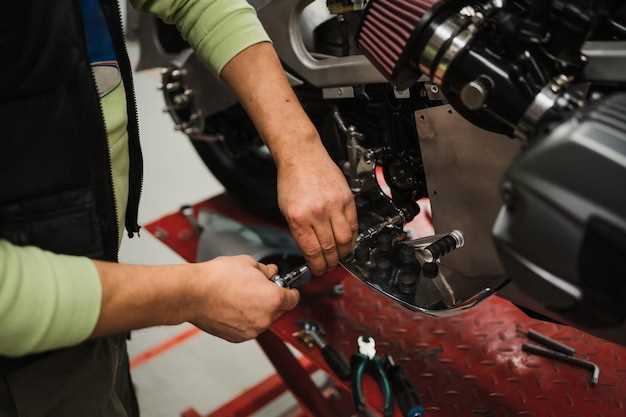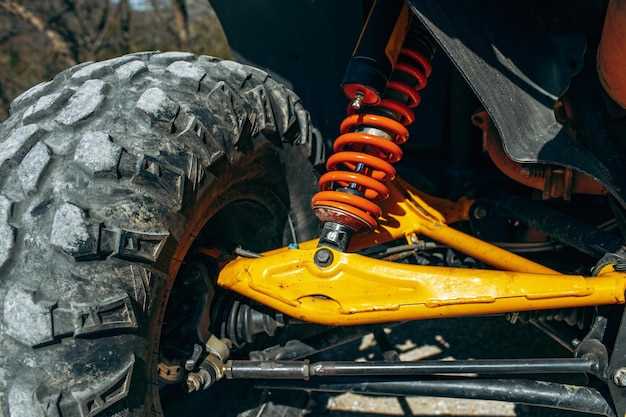
Upgrading the suspension system of your vehicle can significantly enhance the overall driving experience. A well-functioning suspension is essential for providing comfort on the road, ensuring that every journey is smooth and enjoyable. When considering an upgrade, it is crucial to understand the components of your current suspension and how advanced options can improve handling, stability, and comfort.
Modern suspension upgrades include a range of options, from shock absorbers to strut assemblies, each designed to cater to specific driving conditions. By investing in high-quality suspension systems, drivers can effectively reduce the impact of bumps and potholes, enhancing ride quality. This means a smoother, quieter, and more controlled ride, allowing you to enjoy every mile without the distractions that come from inadequate suspension responses.
In addition to comfort, suspension upgrades can also improve your vehicle’s performance in various driving scenarios. Whether you are navigating through city streets, tackling winding roads, or off-roading, the right suspension system can enhance traction and responsiveness. By prioritizing suspension upgrades, you not only invest in comfort but also heighten the overall capability and enjoyment of your ride.
Choosing the Right Suspension Components for a Smoother Ride

Upgrading your vehicle’s suspension components is a critical step towards achieving a smoother and more comfortable ride. The right suspension components can significantly enhance the driving experience by improving handling, minimizing road noise, and providing better overall stability. When selecting suspension components, it’s essential to consider various factors that directly impact performance and comfort.
First, evaluate the type of suspension system your vehicle currently uses. This might be a coilover, leaf spring, or a shock absorber arrangement. Each type has different upgrade options available which are suited for specific driving conditions. For instance, if off-road capability is essential, consider investing in heavy-duty shocks designed to withstand rugged terrain.
Next, focus on the quality of the components. Opt for reputable brands known for durability and performance. High-quality springs and shock absorbers not only provide enhanced comfort but also last longer, minimizing the need for frequent replacements. Additionally, look for adjustable options that allow customization based on personal preferences and driving style.
Don’t overlook the importance of alignment when upgrading suspension components. Proper alignment ensures that the vehicle handles predictably while also extending the life of the tires. After any suspension upgrade, getting a professional alignment should be a priority to maintain optimal driving characteristics.
Moreover, consider the weight of your vehicle and your usual load. Heavier vehicles may require stiffer springs and more robust shock absorbers to handle loads without compromising ride quality. Some manufacturers offer kits specifically designed for heavier applications, ensuring that your upgrade meets your vehicle’s demands.
Finally, ensure that the suspension components are compatible with the existing systems. This involves checking specifications and possibly consulting with a professional to avoid mismatches that could lead to decreased performance or comfort. Every modification should enhance the overall ride quality, making careful selection vital for the satisfaction of your upgrade.
Understanding the Impact of Suspension Tuning on Vehicle Comfort
The suspension system plays a crucial role in determining the overall comfort of a vehicle. Proper tuning of the suspension can significantly enhance the driving experience by improving ride quality and handling characteristics. When we talk about suspension tuning, we refer to the adjustment of various suspension components, including shocks, struts, springs, and anti-roll bars, to create a balance between comfort and performance.
A well-tuned suspension allows the vehicle to better absorb road imperfections, which translates to a smoother ride for occupants. Softening the suspension can help in minimizing harshness when driving over bumps or potholes. This setup is particularly beneficial for those who prioritize comfort over sporty handling. However, it is essential to strike a balance; overly soft suspension may lead to excessive body roll during cornering, making the vehicle feel unstable.
Additionally, the type of shocks and springs used in suspension tuning can greatly impact comfort levels. For instance, adjustable dampers allow drivers to customize the ride based on their preferences or road conditions. This adaptability means that drivers can enjoy a plush ride during daily commuting and switch to a firmer setup for spirited drives, thus enhancing the overall versatility of the vehicle.
Moreover, suspension tuning is highly influenced by the weight distribution and geometry of the vehicle. Understanding how these factors interact allows for more precise adjustments that cater to the specific needs of the driver and vehicle type. Proper alignment and setup not only promote even tire wear but also contribute to increased comfort during various driving conditions.
In conclusion, suspension tuning is a vital aspect of vehicle performance that directly affects comfort. By carefully adjusting various components, drivers can achieve a harmonious balance between ride quality and handling, resulting in a more enjoyable driving experience. Ultimately, the right suspension setup is key to enhancing comfort and ensuring that every journey is a pleasant one.
Installing Suspension Upgrades: Key Steps for Optimal Performance

Upgrading your vehicle’s suspension system is essential for enhancing overall comfort and handling. A well-executed installation ensures that your ride performs at its best. Here are the key steps to follow for optimal results.
1. Gather Necessary Tools and Materials
Before starting the installation, make sure you have all the needed tools, including a jack, jack stands, wrenches, and a torque wrench. Additionally, have your replacement suspension components ready, such as shocks, springs, and bushings.
2. Assess Your Current Setup
Evaluate your existing suspension to determine if it meets your driving needs. Identifying specific areas of concern can guide your upgrade choices, focusing on improving comfort and performance.
3. Raise the Vehicle Safely
Using a jack, lift your vehicle and securely place it on jack stands. Ensure that the vehicle is stable before proceeding, allowing access to the suspension components.
4. Remove Old Suspension Components
Carefully disassemble the existing suspension system. Start with one side of the vehicle, removing components like the shocks and springs. Take note of how parts are mounted to aid in installing the new upgrades.
5. Install New Suspension Parts
Begin installing the new suspension components, following the manufacturer’s instructions. It’s crucial to correctly position each part to ensure proper functionality and increased comfort during driving.
6. Reassemble and Tighten
Once all new parts are in place, reassemble any removed components. Use a torque wrench to tighten bolts to the manufacturer’s specifications, preventing any issues during operation.
7. Test Your Upgrades
Lower the vehicle back to the ground and take it for a test drive. Evaluate the changes in handling and comfort. Make any necessary adjustments to ensure that your suspension upgrade achieves the desired performance improvements.
By carefully following these steps, you can successfully install suspension upgrades that enhance your vehicle’s comfort and overall performance on the road.




